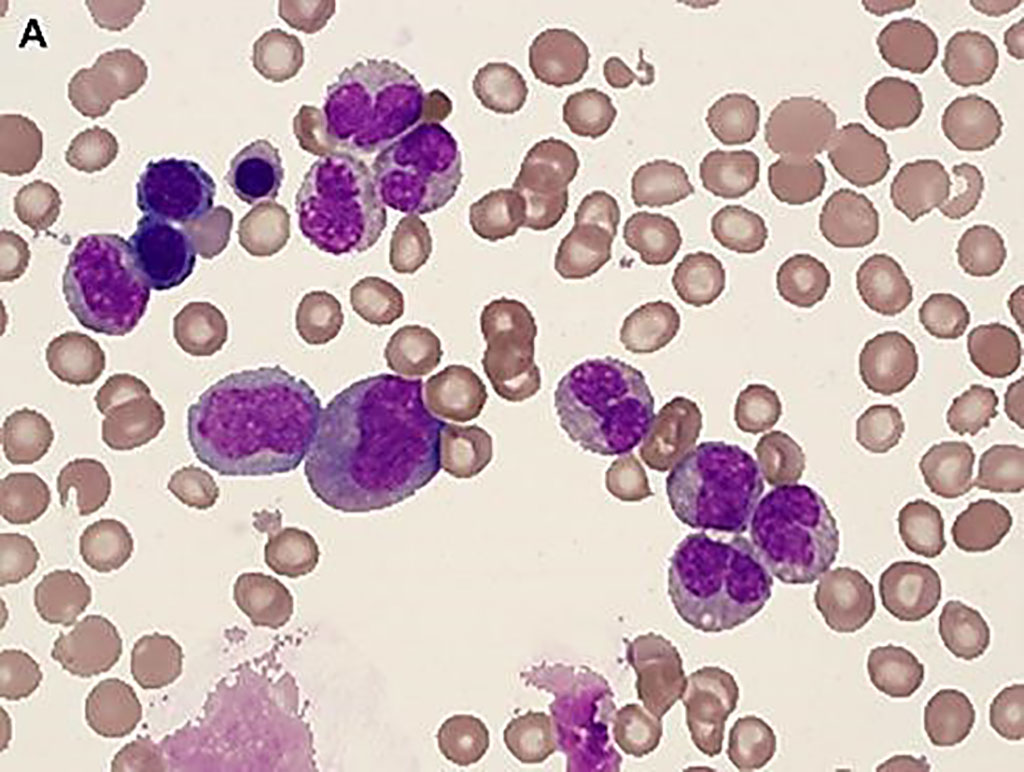Hematologic Complications with Age in Shwachman-Diamond Syndrome
By LabMedica International staff writers
Posted on 24 Jan 2022
Shwachman-Diamond syndrome (SDS) is a rare, inherited bone marrow failure, characterized by a low number of white blood cells, poor growth due to difficulty absorbing food, exocrine pancreatic dysfunction, and, in some cases, skeletal abnormalities. Posted on 24 Jan 2022
Children with SDS have a small but significant chance of developing blood disorders such as myelodysplastic syndrome (MDS) or leukemia. Nearly 5% of children with the condition will develop leukemia, with the risk rising to 25 % by adulthood. In addition, recurring infections, including pneumonia, ear, and skin infections, are common.

Image: Bone marrow biopsy from a patient with severe Shwachman-Diamond Syndrome, hypocellular marrow; scattered mild dysplastic changes in all cell lines; may have prominent hematogones (Photo courtesy of Dragos C. Luca, MD)
A large team of medical scientists led by those at Harvard Medical School (Boston, MA, USA) conducted a cohort study of 153 subjects from 143 families with confirmed biallelic SBDS mutations enrolled on the North American Shwachman Diamond Registry or Bone Marrow Failure Registry. The team collected longitudinal complete blood counts (CBCs). CBCs were included until the time of myelodysplasia (MDS) or leukemia diagnosis or until the time of hematopoietic stem cell transplant (HSCT), when applicable.
Hemoglobin values were excluded during periods of red cell transfusions, platelet values were excluded during platelet transfusions, and absolute neutrophil counts (ANCs) were excluded while on granulocyte colony-stimulating factor (G-CSF). Local bone marrow aspirate and biopsy reports were examined for reported cellularity (from biopsies), fluorescence in situ hybridization, karyotype, and flow cytometry data. Surveillance bone marrows were defined as bone marrow examinations performed in the absence of clinical symptoms.
The investigators reported that 153 individuals (143 families) with biallelic SBDS mutations, including several short case descriptions illustrating the diversity of phenotypes in SDS. Ninety-two were male (60.1%). Median age at last follow-up was 10.4 years (range, 0.3-52.8). The cohort included 39 adults (25.5%) who were >18 years of age at the follow-up. The SBDS c.258 + 2T>C variant was present in all but one patient.
The team evaluated the association between blood counts and age, 2,146 blood counts were analyzed for 119 subjects. Absolute neutrophil counts were positively associated with age. Hemoglobin was also positively associated with age up to 18 years, but the association was negative thereafter. Platelet counts and marrow cellularity were negatively associated with age. Marrow cellularity did not correlate with blood counts. Severe marrow failure necessitating transplant developed in eight subjects at a median age of 1.7 years (range, 0.4-39.5), with 7/8 requiring transplant prior to age 8 years. Twenty-six subjects (17%) developed a myeloid malignancy (16 myelodysplasia and 10 acute myeloid leukemia) at a median age of 12.3 years (range, 0.5-45.0) and 28.4 years (range, 14.4-47.3), respectively.
The authors concluded that their study found that, although marrow cellularity decreased with age, as expected for a genetic bone marrow failure (BMF) condition, blood counts unexpectedly improved with age. Severe BMF was observed in early childhood, whereas myeloid malignancy was observed in later childhood/early adulthood. The study was published on January 11, 2022 in the journal Blood Advances.
Related Links:
Harvard Medical School













